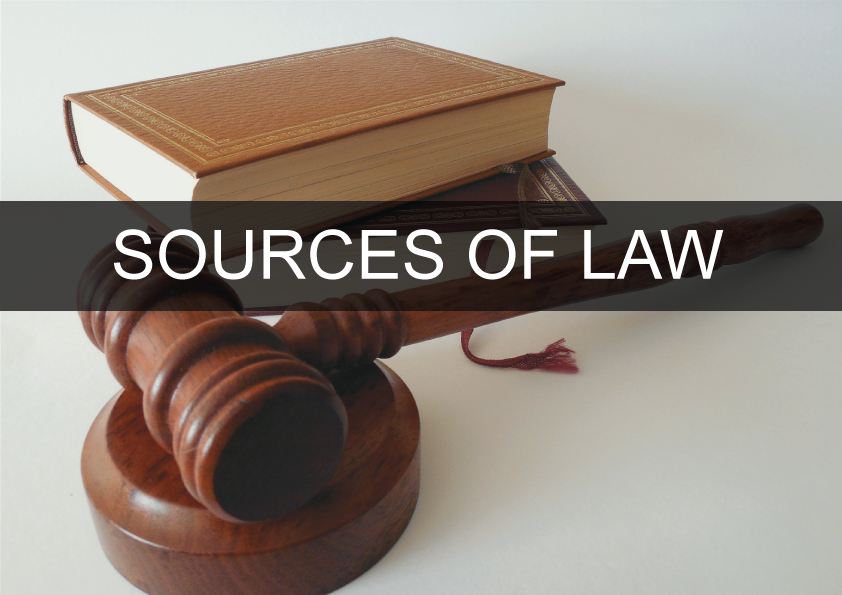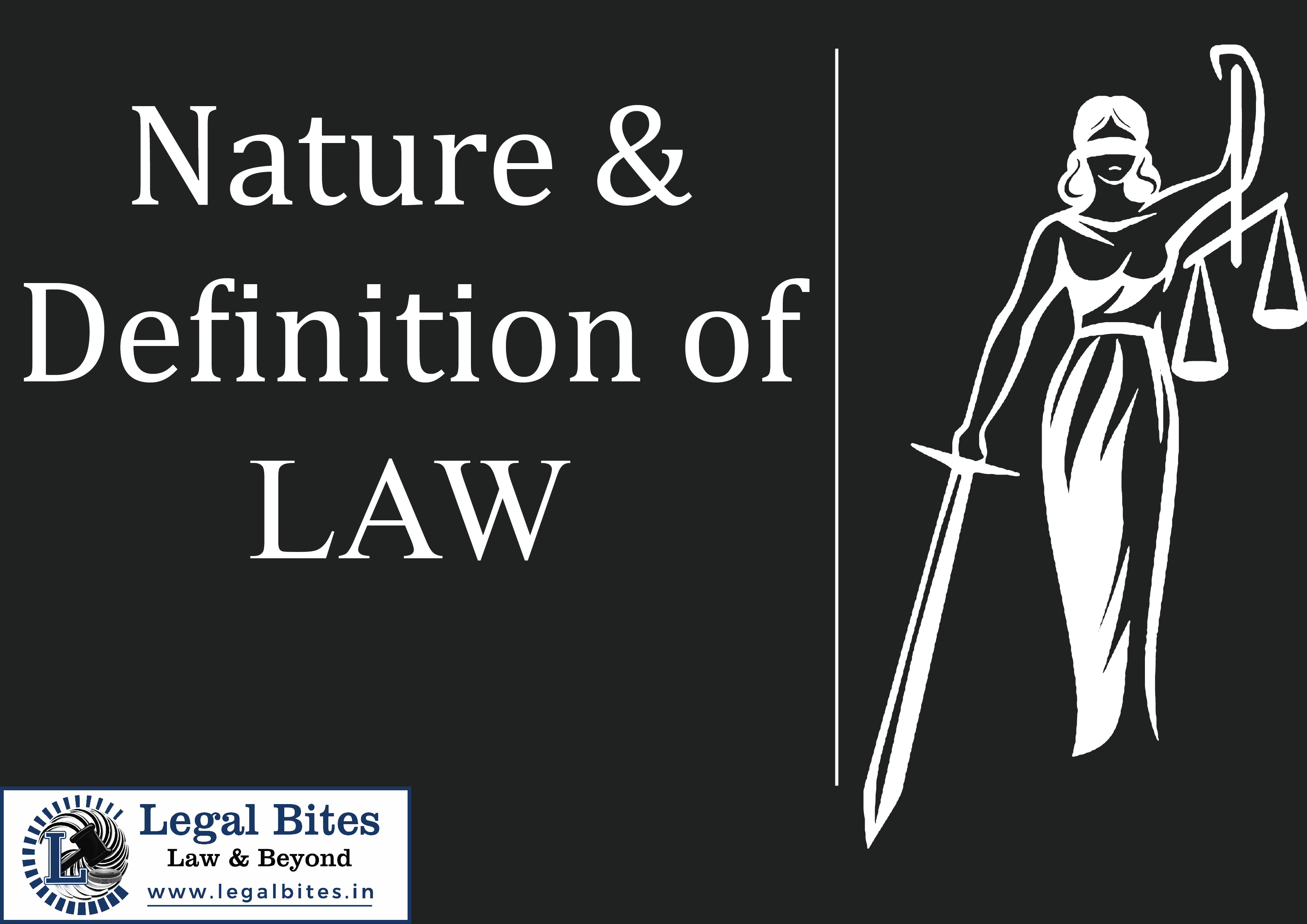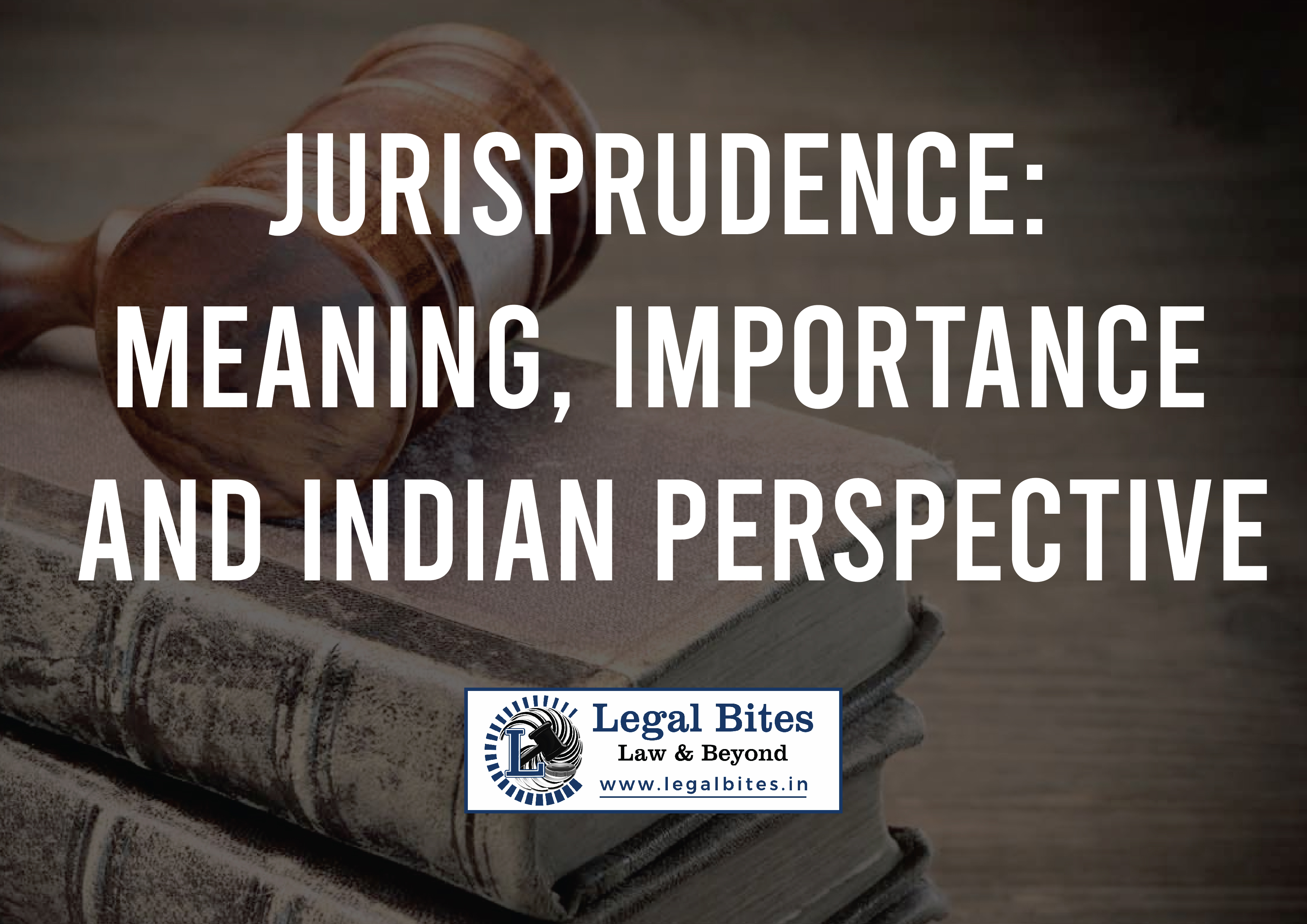Sources of Law
he common sources of law are codified laws, judicial precedents, customs, juristic writings, expert opinions, morality and equity.;

Sources of Law | Overview Meaning Classification Salmond's Classification Keeton's Classification Common Sources of Law Judicial precedents Customs Professional opinions and Juristic writings Conclusion The common sources of law are codified laws, judicial precedents, customs, juristic writings, expert opinions, morality and equity. With the growing popularity of the idea of constitutionalism, legislations and precedents occupy the centre position amongst all the various...
Sources of Law | Overview
- Meaning
- Classification
- Salmond's Classification
- Keeton's Classification
- Common Sources of Law
- Judicial precedents
- Customs
- Professional opinions and Juristic writings
- Conclusion
The common sources of law are codified laws, judicial precedents, customs, juristic writings, expert opinions, morality and equity. With the growing popularity of the idea of constitutionalism, legislations and precedents occupy the centre position amongst all the various sources of law. Let us analyse the sources of law in the article.
Meaning
The meaning of the term "sources of law" differs from writer to writer. The positivists use the term to denote the sovereign or the State who makes and enforces the laws. The historical school uses the term to refer to the origins of law. Others use it to indicate the causes or subject matter of law. Prof. Fuller, in his "Anatomy of the Law", states that a judge interprets and applies certain rules to decide upon a case. Such rules are obtained from various places which are known as "sources". He further goes on to give examples of the common sources of law such as codified laws, judicial precedents, customs, juristic writings, expert opinions, morality and equity. Holland has defined the term to mean the sources of the knowledge regarding law.
Classification
There exists no definite classification of the sources of law. Different thinkers and jurists have given their own classifications according to their own understanding of the meaning of the term.
Salmond's Classification
According to Salmond, there are two main sources of law- formal and material. Formal sources are those from which law derives its validity and force, that is, the will of the State which is expressed through statutes and judicial decisions. He sub-divided the material sources into legal sources and historical sources. Legal sources comprise of legislations, precedent, custom, agreement and professional opinion. They are authoritative in nature and origin and are followed by the courts as a matter of right. On the other hand, historical sources are those which are originally found in an unauthoritative form and are subsequently admitted and converted into legal principles. For instance, precedents are a material source of law. However, domestic precedents are legal source whereas foreign precedents are historical source.
Salmond's classification of the sources into formal and material sources is found to be unsatisfactory by critics. The editor for the twelfth edition of Salmond's 'Jurisprudence' has classified the sources directly into legal and historical.
Keeton's Classification
Keeton's classification of the sources of law has emerged as a critique of Salmond's classification. He defines the term as those materials from which law is eventually fashioned through judicial activity. He classified the sources of law into- binding sources and persuasive sources. Binding sources are those which have to be necessarily followed by the courts. Legislations, judicial precedents and customs are examples of such source. Persuasive sources are those which come into play when there is absence of any binding source on any particular subject. Foreign precedents, professional opinions and principles of morality or equity are examples of persuasive sources of law.
Common Sources of Law
The common sources of law are as follows:
Legislation
The term legislation has been derived from the Latin terms legis meaning law and latum meaning to make. Thus, legislation refers to the making of a law. Salmond defines legislation as, "Legislation is that source of law which consists in the declaration of legal rules by a competent authority." According to Gray, legislation refers to "the formal utterances of the legislative organs of the society."
The analytical school of jurisprudence believes the law to be a set of commands issued by a sovereign authority. This command is what is known as a statute and the process of making of a statute is known as legislation. The analytical positivists believe legislation to be the only true source of law and disapprove of judiciary taking up legislative functions. Furthermore, they do not recognize customs as a valid source of law. On the other hand, the historical school believes legislation to be the "least creative" source of law. They believe that legislation only gives a proper form and structure to the customs that have been developed by the people. Both the views are the two opposite extremes of regarding legislation as a source of law. While the analytical school regards legislation as the only source of law, the historical school disregards it as a source of the new law.
Salmond has classified legislations into supreme and subordinate legislation.
- Supreme Legislation- Supreme legislation refers to the laws made through the exercise of the sovereign power of the State. The power to repeal or amend such laws rests only with the legislative body which has enacted the laws.
- Subordinate Legislation- Subordinate legislation refers to the laws made by an authority other than the sovereign power of the State. Such laws are in constant supervision of the body which enacts supreme legislations. One of the kinds of subordinate legislation is delegated legislation, which is quite popular in the contemporary world.
Judicial precedents
Judicial precedents are regarded as an important source of law in almost all legal systems throughout the world, especially, the systems based on common law. There are some writers who disregard precedent altogether as a valid source of law. Stobbe is of the opinion that precedent refers to the practice of law and the practical application of something cannot be regarded as a source of the same thing. He further adds that a court has the authority to depart from its previous practices and that the practices of one court cannot possibly be binding upon another. Keeton rejects the aforesaid view of Stobbe and holds that a judicial precedent is a valid source of law. He defines judicial precedent as a judicial decision with some amount of authority attached to it. This authority is because of two reasons. Firstly, the judges occupy a high status- politically as well as socially.
Secondly, the nature and the importance of the issues that they decide upon attach some amount of authority to their decisions. Blackstone is of the opinion that former judicial decisions must be binding in the future when similar points come up for judicial deliberation to "keep the scales of justice even and steady".
A judicial precedent can only make new law but cannot alter an existing one. They come into play only when there are gaps in the existing law. Its function is to fill the gaps with new law. Where there is a settled rule of law, the judges are bound to follow it.
Judicial precedents can be classified into the following kinds:
- Authoritative and Persuasive- A authoritative precedent is a judicial precedent which is binding upon the court. They are considered to be the legal sources of law. On the other hand, a persuasive precedent is one which is simply taken into consideration while deciding upon a decision and is not, in any way, binding upon the court to follow. Persuasive precedents are considered to be historical sources of law.
- Absolute and Conditional- Both, absolute and conditional precedents are authoritative in nature. Absolute authoritative precedents are supposed to be followed by the court without question. On the other hand, conditional authoritative precedents may not be followed in certain special circumstances. The special circumstances are when the decision is found to be contrary to law and reason. There are two ways of not following a conditional authoritative precedent- by dissenting or by overruling. Overruling authoritatively declares the precedent as against law or reason. Overruling always involves the risk of a certain law being turned into an uncertain one which the judges must be mindful of. A court of higher jurisdiction can overrule the decision of a subordinate court whereas a court of equal jurisdiction can only dissent.
- Declaratory and Original- Declaratory precedents are those precedents which rule upon an existing rule of law. There already exists a settled principle of law on the issue which the courts need to apply. An original precedent is one where there exists no such settled principle and the court itself creates such a principle through its decision. The authoritative value of both, declaratory and original precedents is equal.
Concept of Stare Decisis- It is a doctrine or policy of following rules or principles laid down in previous judicial decisions, unless, they contravene the ordinary principles of justice. It is a quite recent concept since earlier there was no legal reporting of cases and decisions of the courts. In India, the doctrine of stare decisis is contained in Article 141 of the Constitution of India which declares the decisions of the Supreme Court as binding upon all courts in India. Under this rule, if there have been a number of decisions on a particular principle of law which settles it, it is binding and should be followed by all courts whenever similar issues come up for judicial deliberation. It must be noted that this rule is not astringent and rigid one. Its applicability has to be decided on a case to case basis. The Supreme Court of India has taken up a similar view while deciding upon its cases.[1]
Customs
Salmond defines custom as an embodiment of principles of justice which have appealed to the national conscience. Keeton defines customs as rules of human actions which have been established by continuous usage and have the force of law and are applied by the courts. According to Carter, "The simplest definition of custom is that it is the uniformity of conduct of all persons under like circumstances." Austin, in his disregard for custom as a source of law, defines them as rules of conduct which are simply observed by the "governed" in a non-legal sense.
Custom has been described in the Tanistry case[2] in the following words, "It is a jus non sciptum and made by the people in respect of the place where the custom obtains. For where the people find any act to be good and beneficial and apt and agreeable to their nature and disposition, they use and practice it from time to time, and it is by frequent iteration and multiplication of this act that the custom is made and being used from time to which memory runneth not to the contrary obtains the force of law."
Customs is considered to be the oldest source of law. In ancient times, there were no codified laws to regulate society. Instead, there existed customs which comprised of acts which have been done so repeatedly that they are spontaneously followed by all. The king never made any laws. The customs made by the people were considered to be the law of the land. With the passage of time, it was recognized that the customs are vague and uncertain. This issue was resolved by formal recognition of customs by the sovereign. This is how customs got converted into law.
Customs are of following kinds:
- Legal Custom- Legal customs are those customs which have the full force of law. Regardless of the parties' acceptance of the legal custom, it is binding upon them. These are of two types- general custom and local custom. General customs are applicable throughout the nation whereas local customs are specific to a particular locality.
- Conventional Custom- A conventional custom is binding upon the parties to the dispute only if they agree to it. These are established practices which are agreed to by the parties in an agreement or contract between them.
A custom must fulfil the following requirements in order to be recognized as a valid custom in the eyes of law:
- It must be immemorial, that is, it must be in existence since a long period of time.
- It must be reasonable
- It must have been continuously observed
- It must be certain and definite
- Its observance must be compulsory
- It must be general or universal
- It must not be in opposed to public policy or principles of morality
- It must not be in conflict with any statutory law in the country
Professional opinions and Juristic writings
Another source of law is professional opinions and juristic writings. It mainly comprises of obiter dicta of judges, writings of legal professional and other thinkers and scholars. Though not a popular source of law, it is quite useful in deciding upon original precedents. Some have disregarded professional opinions and juristic writings as a source of law and recognized their role as supplementary to the other important sources of law.
Conclusion
In order to interpret any law it is important to understand the source of the law. This is why the topic of sources of law has received much attention from several jurists, thinkers and legal theorists. The most widely accepted source of law is legislation. The position of customs, the most important source of law in ancient times, has been reduced to a traditional one in the modern times. With the growing popularity of the idea of constitutionalism, legislations and precedents occupy the centre position amongst all the various sources of law.
References
- V. D. Mahajan, 'Jurisprudence and Legal Theory', Fifth Edition, Eastern Book Company.
- W. Friedmann, 'Legal Theory', Fifth Edition, Sweet & Maxwell (South Asian Edition).
[1] See Maktul v. Manbhari, AIR 1958 SC 918; Bachan Singh v. State of Punjab, (1982) 3 SCC 24.
[2] 30 ER 516.
Contributed by Tejas Vasani





